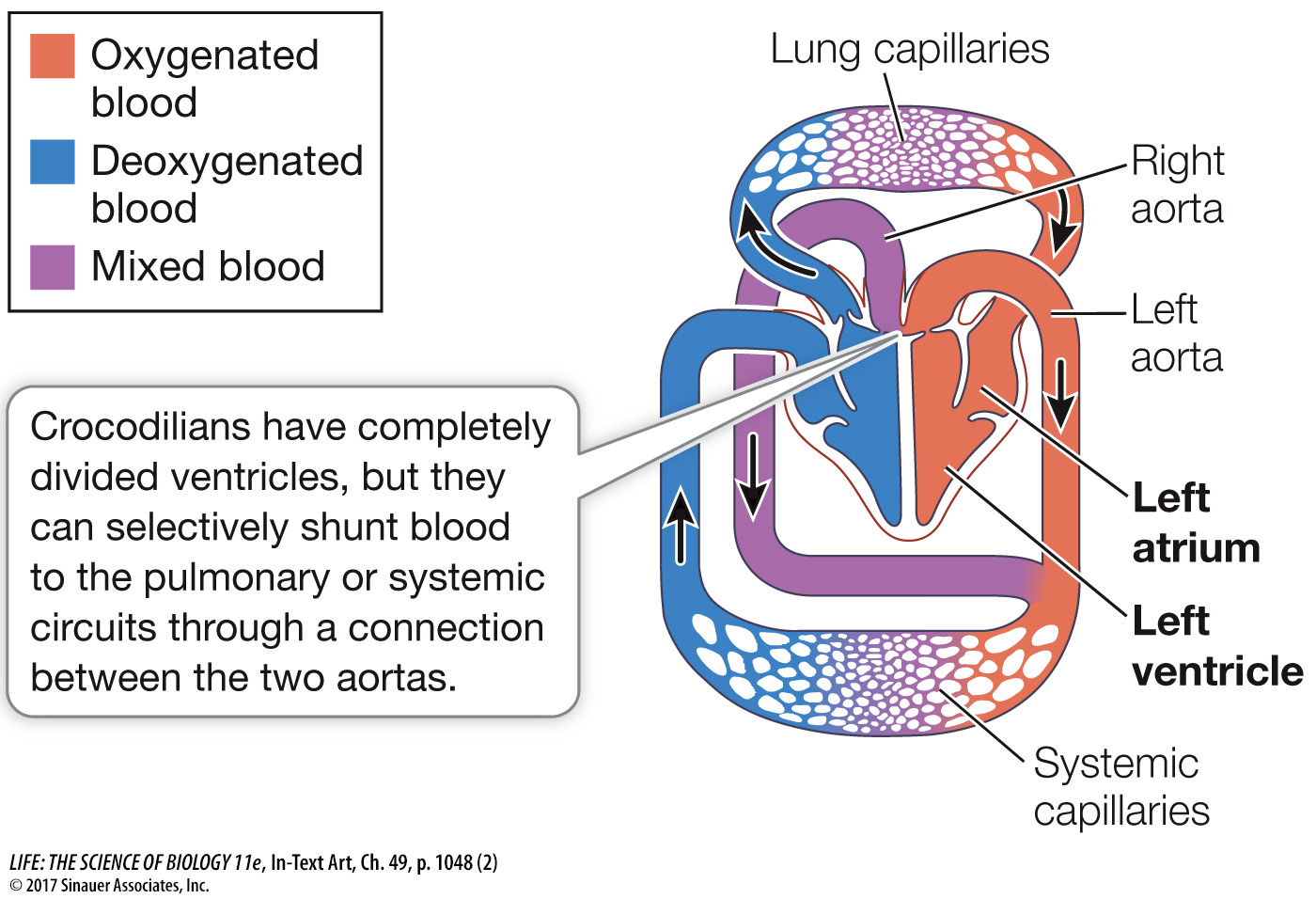Reptiles have exquisite control of pulmonary and systemic circulation
As described in Chapter 32, the reptiles include turtles, snakes, lizards, crocodilians, and birds (see Figures 32.21 and 32.22). Crocodilians and birds have circulatory systems with two completely separated ventricles, creating a four-
Consider the behavior, ecology, and physiology of ectothermic reptiles (i.e., excluding birds). Many are active, powerful, fast animals, but their activity comes in bursts that are interspersed with long periods of inactivity. At these times the animals’ metabolic rates are much lower than the resting metabolic rates of the endothermic birds and mammals. So enormous is the range of metabolic demand in ectothermic reptiles that they do not need to breathe continuously. Some species are accomplished divers and spend long periods under water, where they cannot breathe air.
When these animals are not breathing, it would be a waste of energy for them to pump blood through their lungs. Thus they pump blood to the lungs and the rest of the body when they are breathing, but when they are not breathing, they can bypass the pulmonary circuit and pump most of the blood to the body. How do they do this?
In ectothermic reptiles with a three-
When the animal is breathing air, the resistance in the pulmonary circuit is lower than the resistance in the systemic circuit, so blood from the right side of the ventricle tends to flow into the pulmonary artery rather than the right aorta. When the animal is not breathing, pulmonary vessels constrict, resistance in the pulmonary circuit goes up, and blood from the right side of the ventricle tends to flow into the right aorta. As a result, blood from both sides of the ventricle flows through the two aortas to the systemic circuit.

Crocodilians, like birds, have two completely separated ventricles. Unlike birds, they have two aortas, one originating in each ventricle. But there is a connection between the two aortas just as they leave the heart, and this connection enables them to alter the proportions of blood going to their pulmonary and systemic circuits. When a crocodile or alligator is breathing and resistance in the pulmonary circuit is low, backpressure from the stronger left ventricle closes the valve between the right ventricle and the right aorta, forcing all of the blood from the right ventricle to flow into the pulmonary circuit. When the animal stops breathing, pulmonary vessels constrict, resistance in the pulmonary circuit rises, and pressure in the right ventricle overcomes the backpressure in the right aorta from the left ventricle. As a result, the blood from the right ventricle flows into the right aorta. This ability of all ectothermic reptiles to direct blood to their pulmonary or systemic circuits is highly adaptive for their lifestyle of intermittent breathing.
